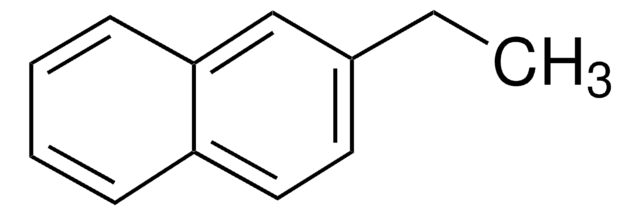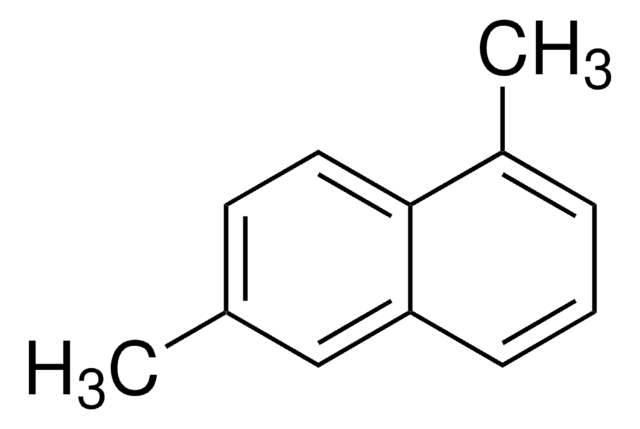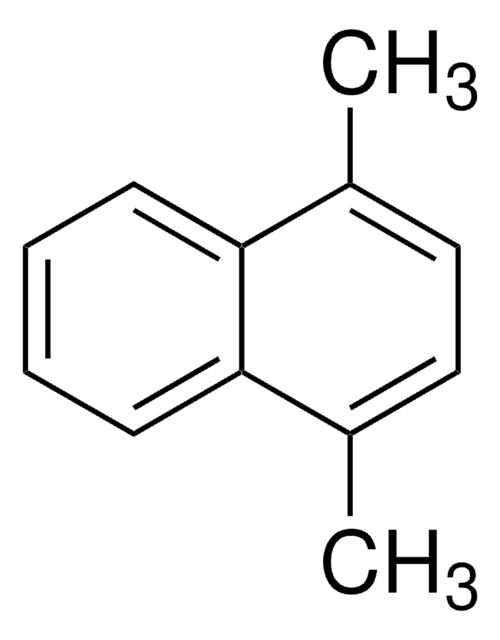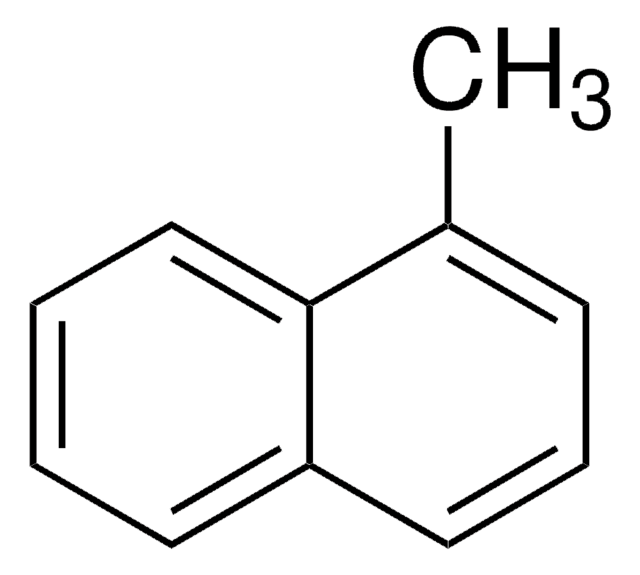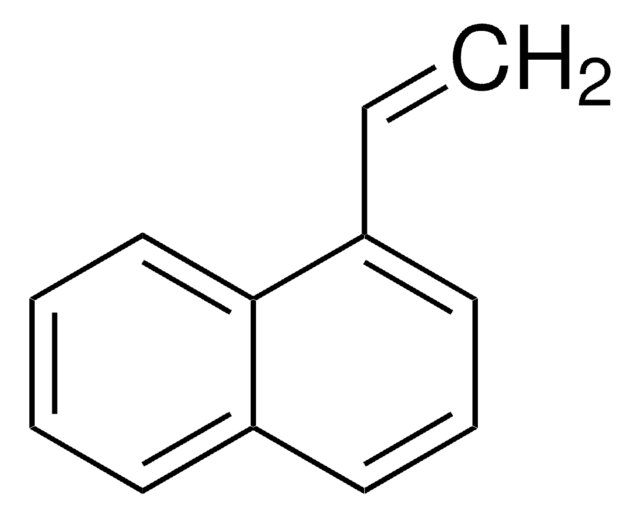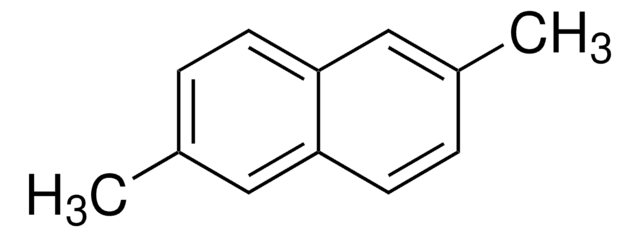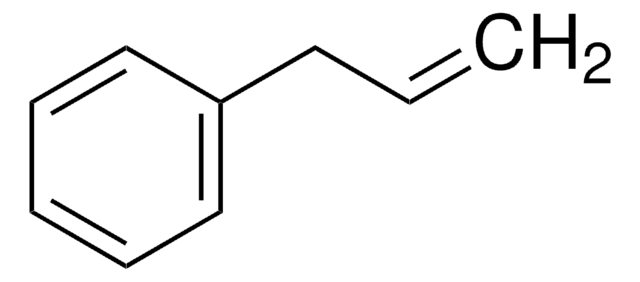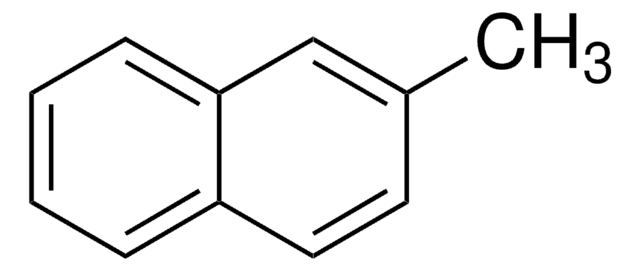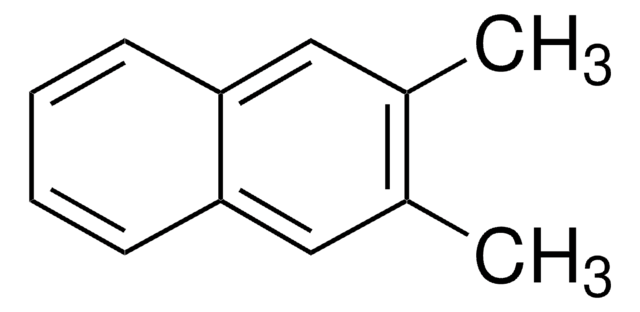All Photos(1)
About This Item
Linear Formula:
C10H7C2H5
CAS Number:
Molecular Weight:
156.22
Beilstein:
1854417
EC Number:
MDL number:
UNSPSC Code:
12352100
PubChem Substance ID:
NACRES:
NA.22
Recommended Products
Assay
≥97%
form
liquid
refractive index
n20/D 1.606 (lit.)
bp
258-260 °C (lit.)
mp
−15-−14 °C (lit.)
density
1.008 g/mL at 25 °C (lit.)
SMILES string
CCc1cccc2ccccc12
InChI
1S/C12H12/c1-2-10-7-5-8-11-6-3-4-9-12(10)11/h3-9H,2H2,1H3
InChI key
ZMXIYERNXPIYFR-UHFFFAOYSA-N
Looking for similar products? Visit Product Comparison Guide
Application
1-Ethylnaphthalene has been employed as guest molecule to investigate:
- effect of binding Tb3+ to sodium taurocholate aggregates containing polyaromatic hydrocarbon guests
- its binding to aggregates of sodium cholate, taurocholate, deoxycholate and deoxytaurocholate
Storage Class Code
10 - Combustible liquids
WGK
WGK 3
Flash Point(F)
231.8 °F - closed cup
Flash Point(C)
111 °C - closed cup
Personal Protective Equipment
dust mask type N95 (US), Eyeshields, Gloves
Choose from one of the most recent versions:
Already Own This Product?
Find documentation for the products that you have recently purchased in the Document Library.
Rui Li et al.
Langmuir : the ACS journal of surfaces and colloids, 25(24), 13800-13808 (2009-07-18)
The binding of naphthalene (Np), 1-ethylnaphthalene (EtNp), acenaphthene (AcN), and 1-naphthyl-1-ethanol (NpOH) as guests to the aggregates of sodium cholate (NaCh), taurocholate (NaTC), deoxycholate (NaDC), and deoxytaurocholate (NaTDC) was studied with the objective of determining how the structure of the
Tamara C S Pace et al.
Photochemical & photobiological sciences : Official journal of the European Photochemistry Association and the European Society for Photobiology, 10(10), 1568-1577 (2011-07-14)
The effect of binding Tb(3+) to sodium taurocholate aggregates containing polyaromatic hydrocarbon guests was examined using pyrene and 1-ethylnaphthalene as guests that bind to the primary aggregate, and 1-naphthyl-1-ethanol as a secondary aggregate guest. Time-resolved fluorescence quenching studies were used
Hyun-Joong Kang et al.
Chemosphere, 222, 656-664 (2019-02-08)
Crude oil released into the environment contains many polycyclic aromatic hydrocarbons (PAHs). Alkylated PAHs are more abundant than unsubstituted PAHs and their toxicity is also of serious concern. Among the various physical, chemical, and biological weathering processes of crude oils
Danlei Wang et al.
Chemico-biological interactions, 315, 108905-108905 (2019-11-26)
Mineral oils are widely applied in food production and processing and may contain polycyclic aromatic hydrocarbons (PAHs). The PAHs that may be present in mineral oils are typically alkylated, and have been barely studied. Metabolic oxidation of the aromatic ring
Nien-Hsin Kao et al.
Marine pollution bulletin, 97(1-2), 319-332 (2015-06-08)
Three fishing harbors were investigated to study the polycyclic aromatic hydrocarbons in the sediments and trace possible anthropogenic sources by identification of cyclic terpenoid biomarkers. Seventeen terpanes, 10 steranes and 10 bicyclic sesquiterpanes in the marine diesel and the three
Our team of scientists has experience in all areas of research including Life Science, Material Science, Chemical Synthesis, Chromatography, Analytical and many others.
Contact Technical Service